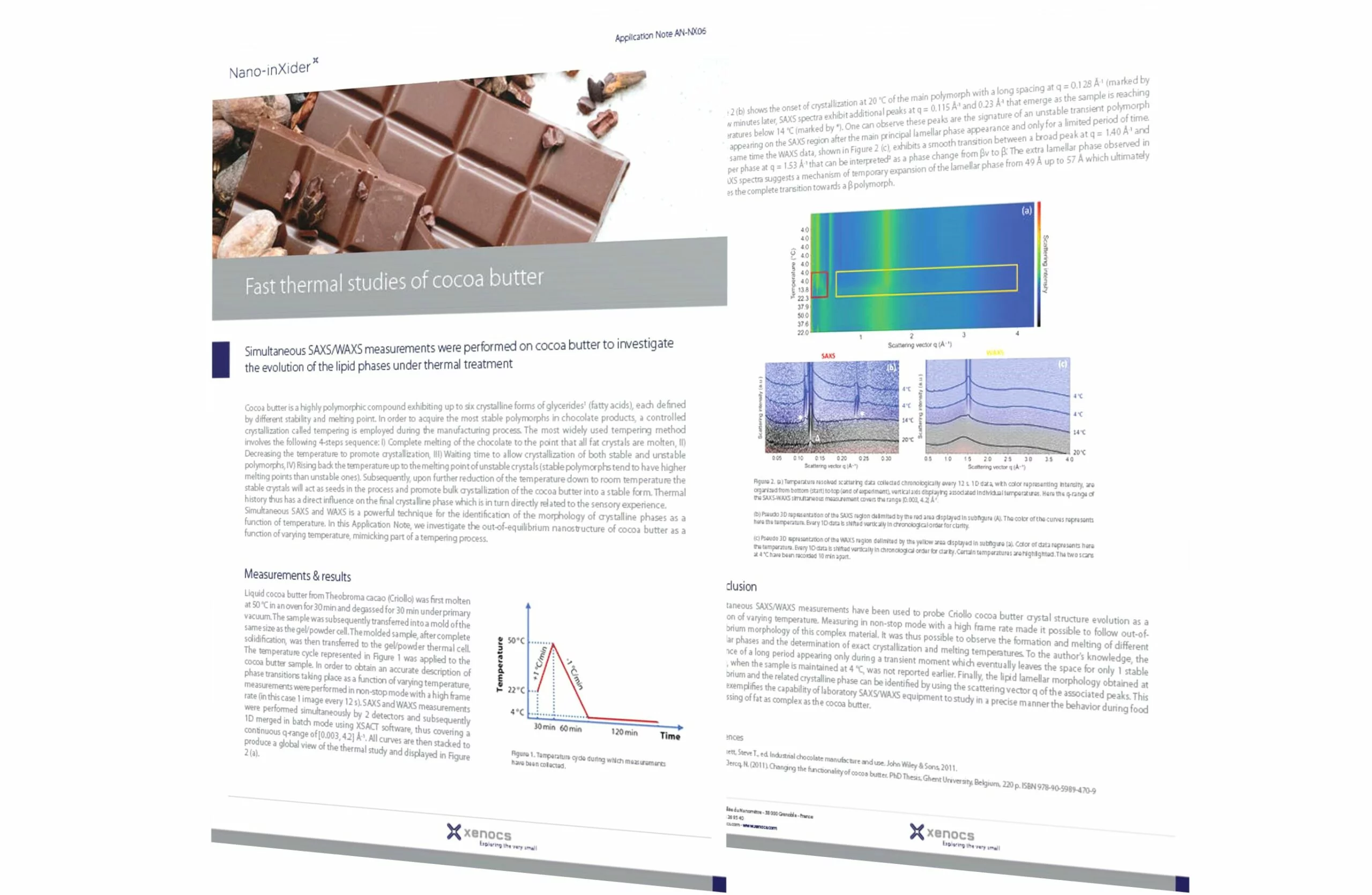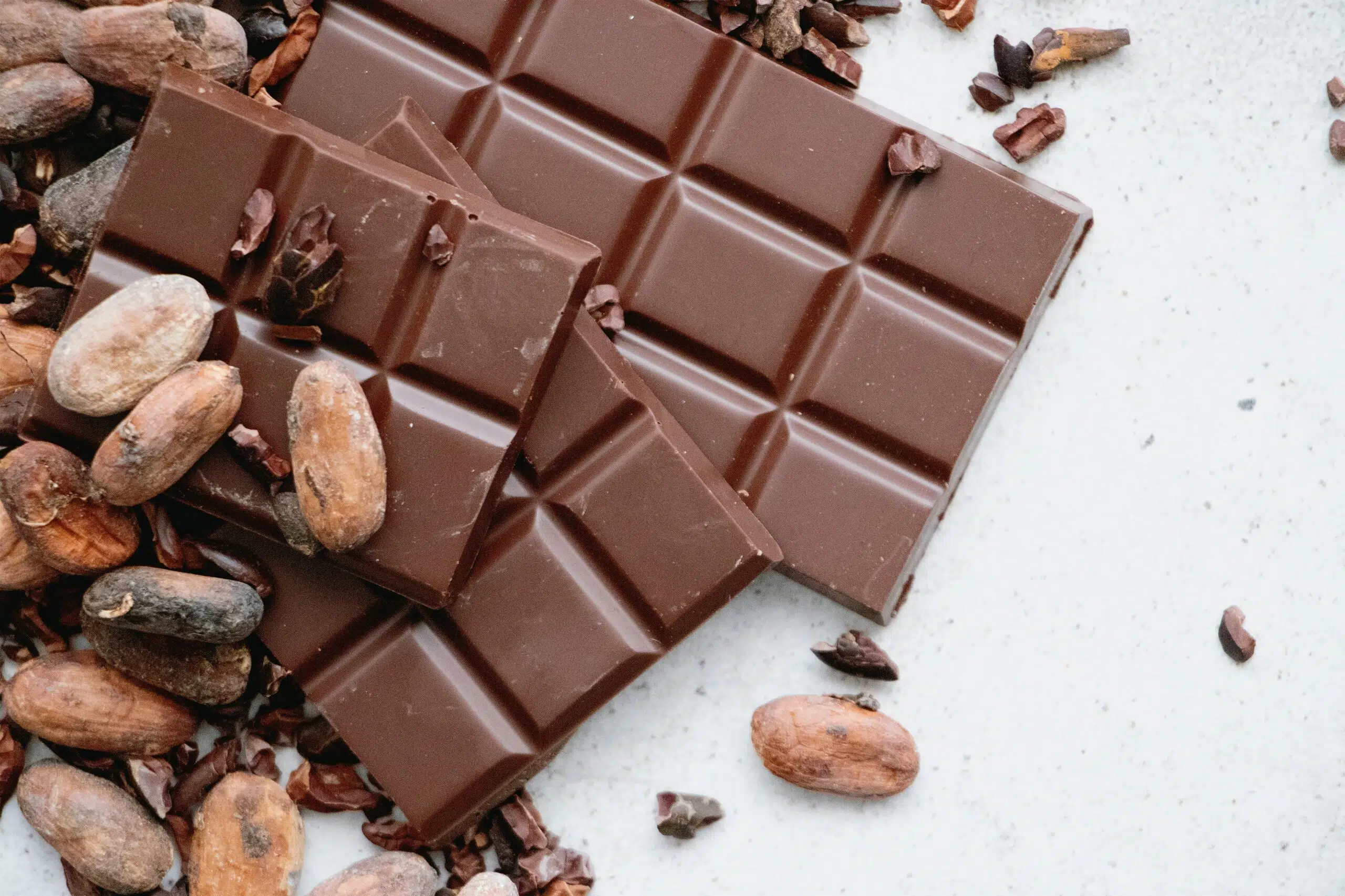Simultaneous SAXS/WAXS measurements were performed on cocoa butter to investigate the evolution of the lipid phases under thermal treatment
Cocoa butter is a highly polymorphic compound exhibiting up to six crystalline forms of glycerides1 (fatty acids), each defined by different stability and melting point. Each of these structures induce different properties in terms of taste, texture and appearance2. The most desired crystal form in terms of sensory experience is the V form which results in products that:
- have a smooth texture,
- have a shiny appearance,
- are solid at room temperature producing an audible snap when broken but melt in the mouth
- do show significant white blooming.
But unfortunately the V form is not the most stable of the six polymorphs. Thus, in order to acquire the most stable polymorphs in chocolate products, a controlled crystallization called tempering is employed during the manufacturing process.
The most widely used tempering method involves the following 4-steps sequence:
- Complete melting of the chocolate to the point that all fat crystals are molten
- Decreasing the temperature to promote crystallization
- Waiting time to allow crystallization of both stable and unstable polymorphs
- Rising back the temperature up to the melting point of unstable crystals (stable polymorphs tend to have higher melting points than unstable ones).
Subsequently, upon further reduction of the temperature down to room temperature the stable crystals will act as seeds in the process and promote bulk crystallization of the cocoa butter into a stable form. Thermal history thus has a direct influence on the final crystalline phase which is in turn directly related to the sensory experience.
Simultaneous SAXS and WAXS is a powerful technique for the identification of the morphology of crystalline phases as a function of temperature. In this Application Note, we investigate the out-of-equilibrium nanostructure of cocoa butter as a function of varying temperature, mimicking part of a tempering process.


































